SEO
SEO for Plumbers: The Complete Guide
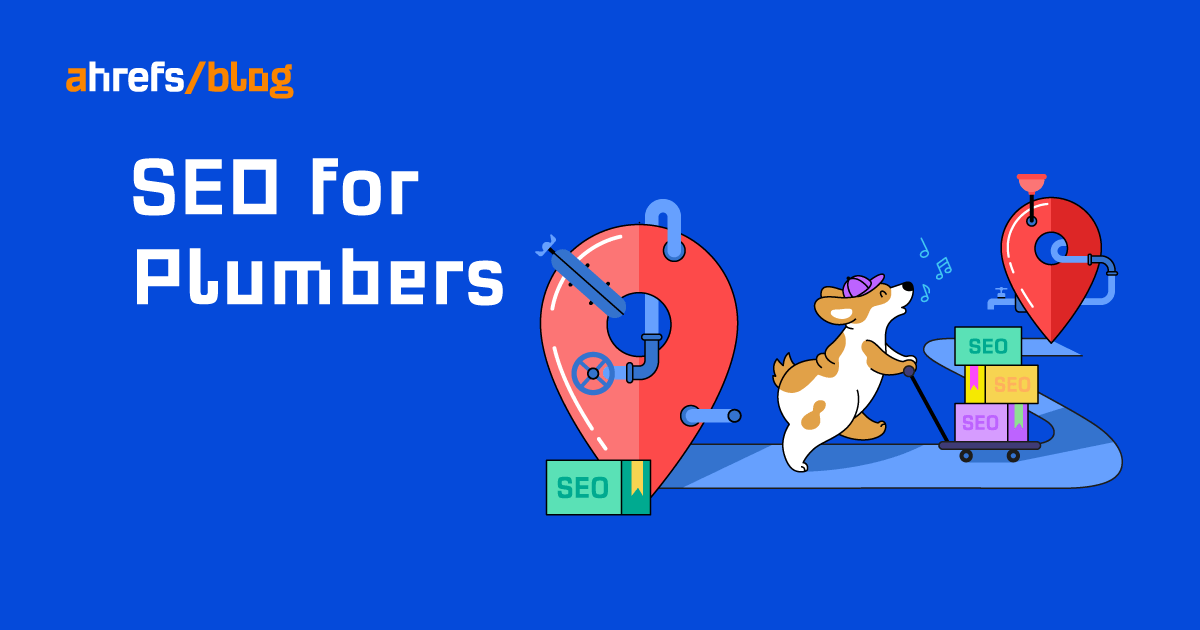
Everyone searches for plumbers on Google. Nobody uses the Yellow Pages anymore.
This means that if you want to attract more customers to your plumbing business, the first page of Google is where you need to be.
This guide teaches you how to get there from start to finish.
Let’s kick things off by answering a few basic (but important) questions.
Why is SEO important for plumbers?
SEO is important for plumbers because hundreds of thousands of people search Google for local plumbers every month.

Many people search for specific types of plumbers too, like emergency plumbers and gas plumbers:

If you don’t show up in Google when people in your area search for what you do, you’re missing out on business.
Here are a couple of stats further highlighting the importance of SEO for plumbers:
- Every month, there are over 700,000 searches for “plumbers near me” globally.
- Every month, there are hundreds of thousands of searches for other plumbing services like “emergency plumber near me” and “gas plumber near me.”
Can I do SEO for my plumbing business myself?
Yes. The basics of SEO are simple. You may need some help with more complex things like link building and fixing technical issues. But you can improve your visibility online even if you don’t have a technical bone in your body.
Google shows two types of results for local queries (e.g., “plumber near me”):
- Map pack results
- Regular organic results

You can rank in both of them. But to rank in the map pack, you need to claim and optimize a free Google Business Profile.
Let’s explore how to do that.
1. Claim and optimize your Google Business Profile
A Google Business Profile is a free local listing from Google. It allows a business to rank in the map pack.
Here’s how to claim and optimize your profile:
A. Add or claim your business
This is done through Google Maps. Google explains how to do this on any device here.
B. Set your business category
This is straightforward enough for most plumbers as, unsurprisingly, the best category is usually “Plumber.” However, you should be as specific as possible when choosing a category, so there are a few others to consider if you specialize in a particular area. Examples include:
- Gas installation service
- Drainage service
- Heating contractor
C. Set your service area
This lets customers know whether you serve their area. You can list up to 20. Just ensure that the boundaries of your overall service area don’t extend farther than about two hours of driving time from where your business is based, as per Google’s guidelines.
D. Add other basic information
This helps customers understand if you’re the right solution for them. Essential details include your opening hours, phone number, and website. Add photos of plumbing jobs completed if possible too. The more complete your profile, the better.
E. Add services
This helps potential customers understand whether you can help with their issues. Filling these in accurately may also help prevent phone calls from folks asking for things you don’t offer. That’s useful if you specialize in a specific area like bathroom installation.

Recommendation
You’ll need an optimized Business Profile for each office if you serve multiple cities or states with multiple offices. Repeat the steps above to do that.
2. Get listed in directories
Most business directories list your business name, address, and phone number. In the SEO world, these are called NAP citations. According to BrightLocal’s survey, 7% of SEOs think they’re the most important ranking factor for map pack rankings.

Follow these two simple steps to get NAP citations for your business.
A. Get listed with big data aggregators
Data aggregators feed information about your plumbing business to many directories. Get listed with them, and you could end up with hundreds of citations.
Here are the big data aggregators in the U.S.:
You’ll also want to submit your business to other big players. In the U.S., these include:
- Apple Maps
- Yelp
- Yellow Pages
- Bing Places
- TomTom
- Dunn & Bradstreet
B. Get listed in industry and city-specific directories
Plumbing and city-specific directories are your next target. You can use the Link Intersect report in Ahrefs’ Site Explorer to find them. This shows you websites linking to multiple competitors, but not you. For local businesses, many of these will be directories.
Here’s the process:
- Paste your website into Site Explorer
- Go to the Link Intersect tool
- Enter the homepage URLs of 5–10 competitors
- Hit “Show link opportunities”
- Eyeball the results for relevant directories


As you can see, many of the linking sites are directories for plumbers or local businesses.
3. Get more reviews
Reviews are important for ranking in the map pack. In fact, according to BrightLocal’s survey, 17% of SEOs think they’re the most important ranking factor.

Here’s how to get more reviews for your plumbing business:
- Use Google’s Business Profile Manager to create a review link and send it to happy customers
- Turn your review link into a QR code and print it on your business card
- Give previous customers a call and ask them to leave a review
- Put the review link on your website
People don’t always click map pack results. They also click the regular organic results. This means you can’t just rely on your Google Business Profile to attract business. You also need to optimize your website to rank for relevant keywords.
If you build a reputation and a few good backlinks (more on that later), your homepage will hopefully rank for obvious terms like “plumber near me.” But not everyone who needs a plumber searches this way.
Some people will search for more specific services like “emergency plumber” or “drain unblocking.”

For this reason, you should create additional pages on your website to attract more customers from relevant searches. To do that, you need to know what potential customers are searching for.
Here’s how to do that in three simple steps.
1. Find service and industry keywords
Put your thinking cap on and list the services you offer.
Here’s what that may look like:
- Drain unblocking
- Boiler repair
- Boiler installation
- Boiler servicing
- Radiator installation
- Burst pipe repair
- Drain cleaning
- Toilet installation
- Tap repair
Recommendation
Check the services listed on your Google Business Profile to speed up this process.
Next, paste the list into Ahrefs’ Keywords Explorer, select your country from the dropdown, check the Matching terms report, then add the phrase “near me” to the “Include” filter.

This will show you other local services people search for that include the terms on your list.
For example, if we paste the list above into Keywords Explorer, we see terms like:
- sewer drain cleaning near me
- storm drain cleaning near me
- gas boiler repair near me
- commercial boiler repair near me
- radiator installation near me
Eyeball the results and add any missed services you offer to your list.
2. Check relative popularity
You’ll probably want to create pages for all the services you offer. But it makes sense to prioritize the ones people are searching for the most.
To do this, repeat the previous step with your completed list of services. As reports in Keywords Explorer are sorted by monthly search by default, it should tell you roughly which services get the most searches.

Of course, this is national search popularity (not local). But what happens in one city is likely to be similar in the next, so it doesn’t really matter.
3. Assign keywords to pages
Most service keywords deserve their own pages. But it may be best to group similar ones together if Google ranks near-identical results.
For example, the results for “drain cleaning near me,” “drain unblocking near me,” and “drain clearance near me” are virtually indistinguishable. This is because all of these searches mean roughly the same thing.
In cases like these, there’s no need to create multiple pages for each service. Just create one.
Recommendation
If you’re unsure whether to create one or multiple pages for similar keywords, consider whether having multiple pages will be useful for visitors. If the answer’s no, one page is usually the best bet.
Learn more: How to Do Local Keyword Research
Knowing what keywords to target is useful. But unless you actually create pages to target them, there’s not much point in doing keyword research. There are also a few other pages you should create. Let’s go through them all.
1. Create service pages
Each of the main services you offer should have its own page.
There are many ways to create these, so it’s impossible to say what will work best for you. But if you’re looking for a good starting point, here’s a rough template:

Here are the four areas to focus on:
- Clarity – Help visitors understand whether this service is right for them by tying it to the problems they may be facing
- Catchment – Help visitors understand whether you serve them with a map and locations
- Confidence – Help visitors understand why they should choose your business; reviews, accreditations, and unique selling points are the name of the game here
- Contact – Tell visitors how to get in touch
None of this is rocket science. Even better, the only bit you need to change between pages is clarification of the service offered. You can reuse catchment, confidence, and contact information across them all.
2. Create an “about” page
Most plumbers have an “about” page even if they’re not invested in SEO. And although these pages rarely pop up in search results, they’re a useful place to demonstrate E-A-T.
E-A-T stands for expertise, authoritativeness, and trustworthiness. It’s not a Google ranking factor, but ranking factors do map to these qualities.
Here are a few ideas for demonstrating E-A-T on your “about” page:
- Explain how the business started
- Explain how long you’ve been in business and/or been a plumber
- Talk about your certifications and accreditations
- Explain how you’re insured and licensed
- Feature reviews and testimonials from happy customers
Learn more: What Is E-A-T? Why It’s Important for SEO
3. Create a location page
This isn’t necessary if you’re a one-person band operating in one area. But if you have multiple bases and service areas dotted around the country, you need to list these on a location page.
Here’s an example from TDIndustries:

You can also create individual pages for each location like Mr. Rooter:

There can be SEO benefits to having a page for each location. But generally speaking, having one page listing them all will suffice for most plumbers.
Having pages for services people search for is a large part of the battle won. But there are a few extra on-page optimizations you can make to get the most juice out of them.
A. Write compelling title tags and meta descriptions
Title tags and meta descriptions are important because they often appear in search results.

You can’t get too creative when writing these for service and location pages (which are the important ones). Still, they do need to be as accurate and compelling as possible.
Title tags
Simplicity is the name of the game here. Your service and business name in title case divided by a pipe will usually suffice.
Drain Unblocking | [Business Name]
For location pages, use your main service and add “in [location]”:
Plumber in Atlanta | [Business Name]
Meta descriptions
No need to reinvent the wheel here either. Just give a few more details about the service and your business.
Here’s a good example:
Things not draining properly? Josh’s Plumbing Company can unblock and repair any and all drainage problems. We’re here to help 24/7.
Keep these within around 120 characters, or they may truncate. (A free tool like SERPSim can help keep you in range.)
B. Use short, descriptive URL slugs
A URL slug is the last part of the URL that describes the content on the page.

Descriptive URL slugs are important because they help searchers understand the content and context of the page before clicking. They’ll get cut off in the search results if they’re too long, so it also pays to keep them short and sweet.
Here’s a simple format for service page URL slugs:
service-name
Example:
drain-cleaning
It’s that simple. Just the service name with dashes between words. No need to shoehorn locations or additional keywords in there.
For location pages, write the location name instead.
Having pages optimized for search engines is all well and good. But unless Google can find and index those pages, it’s all a waste of time because only known and indexed pages can appear in search results. This is where technical SEO comes in.
Technical SEO may sound scary, but the basics are pretty straightforward.
This section explores setting your site up for technical success and monitoring its technical health over time.
A. Plan your site structure
Site structure is how your website is organized. It’s important because it helps:
- Visitors navigate your website.
- Google to find all your pages.
Here’s a good starting point for your site structure:

Each of the connectors is an internal link.
Recommendation
Feel free to internally link between pages in other ways too. For example, if you only offer drain cleaning services in half of the areas you serve, you may want to list and link to those areas on the drain cleaning service page. It’s completely fine to do this.
B. Use HTTPS
HTTPS is a secure way for visitors to access webpages. It’s important for SEO because it’s been a lightweight ranking factor since 2014.
To check if you’re using HTTPS, visit your website and look at the search bar. If there’s a lock icon before the website address, you’re using HTTPS.

If you’re not using HTTPS yet, ask whoever is in charge of your website to make the switch.
C. Monitor your SEO health
Your website’s SEO health can impact the site’s rankings or even stop it from appearing on Google.
For example, here’s a small piece of HTML that SEOs call a “noindex tag”:
<meta name="robots" content="noindex" />
It may look harmless enough, but this code blocks Google from indexing or returning a webpage in its search results. Even if your page ranked #1, it wouldn’t show up at all with this code.
This is an extreme example, but it highlights the importance of monitoring your SEO health.
You can use all kinds of tools to do this, but Ahrefs Webmaster Tools (AWT) is a good starting point. It scans your website for 100+ common SEO issues and advises how to fix them. Best of all, it’s completely free.
If you’re new to AWT, a good first port of call is to check your Health Score.

This metric gives you a high-level overview of your site’s technical SEO health. If it doesn’t look great, you can delve into individual reports to better understand what’s wrong and how to fix it.
Learn more: The Beginner’s Guide to Technical SEO
Backlinks are one of Google’s strongest ranking factors. In general, the more high-quality backlinks you have, the better your rankings and search traffic.
Unfortunately, link building is one of the more challenging facets of SEO. Getting high-quality backlinks takes time, creativity, and effort.
Here are a few tried and tested tactics for those willing to do the work.
Guest blogging
Guest blogging is where you write a post for another website. This brings all kinds of benefits, including exposure and relationships. But the main SEO benefit is the link back to your website.
Here’s an example:

This post was written by a plumbing firm in Australia for Porch.com, a site about home improvement. You can see the link to the firm’s site after the header image.
Here’s how to find guest post opportunities in Ahrefs’ Content Explorer, a searchable database of billions of webpages:
- Enter a broad word or phrase related to your niche
- Change the search mode to “In title”
- Filter for pages on sites with a minimum DR of 30 to remove low-quality sites
- Filter for websites with 5,000+ estimated monthly search traffic
- Filter for pages published within the last 90 days to remove those that are no longer publishing
- Filter for “One page per domain,” as there’s no point pitching to the same site many times
This search will return recently published pages about the topic on sites with search traffic.
For example, if you run the search for “bathroom remodel,” you get 62 results, including this blog post about bathroom remodeling ideas on a site with an estimated 38K monthly search visitors.

Since you know this website has recently published about bathroom remodeling ideas, it may be interested in a guest post about a similar topic like bathroom remodeling mistakes. You just need to find its email address and pitch the post.
Recommendation
People will often request payment for guest posts. If this happens, don’t worry about it. Just say no and pitch to another website.
HARO
HARO (Help A Reporter Out) is a free service connecting sources and journalists. Sign up as a source, and you’ll receive regular emails with journalist requests.
Here’s one from Martha Stewart Living about plumbing leaks:

Respond to and answer the journalist’s questions if you see a relevant request. They’ll usually credit you with a link if they include your answer in their piece.
This is exactly what happened on this occasion:

If we check this plumbing company’s backlink profile in Ahrefs’ Site Explorer, we see just how well this tactic is working for it. It has 16 links, thanks to quotes from co-founder Max Rose. It probably got all, if not most of these, from journalist requests.

Replicate competitors’ links
You won’t be able to replicate all of your competitors’ links. But chances are, you can replicate some of them. For that reason, it’s worth taking one or two of the top-ranking competitors for “plumber in location” and checking their backlinks. Here’s how:
- Paste a competitor’s domain into Ahrefs’ Site Explorer
- Choose “Exact URL” search mode
- Filter for “DoFollow” links only (these usually move the needle most)

Here’s one that may be replicable for this competitor:

It comes from a website listing NHS discounts and deals for various services. The site gets an estimated 13.5K monthly search visits, according to Ahrefs, and it looks like you can add a discount just by registering.

Recommendation
Reclaim lost links
Most websites delete or move pages from time to time. You can recover the lost value of any backlinks pointing to them by redirecting them to their new locations.
Here’s the process:
- Paste your domain into Site Explorer
- Go to the Best by Links report
- Filter for “404 not found” pages
For example, Mr. Rooter has 12 broken pages, including one about its emergency plumbing services with backlinks from six referring domains.

If we click the “Emergency Plumbing” link on the website, we’re taken to a different URL.

This is probably because it moved the page at some point. To reclaim the old page’s backlinks, it just needs to redirect the old URL to the new one.
Ranking service and location pages isn’t all you can do to get traffic (and customers) from organic search. You can also create and rank helpful content about things potential customers may be searching for.
For example, this post from Mr. Rooter explaining why your house may smell like sewage gets an estimated 13.6K monthly search visits:

Even if only 0.1% of those visits translate to customers, that’s 13–14 customers per month from one blog post.
You’ll also notice that this post has backlinks from 54 referring domains.
This is another benefit of creating useful informational content. It tends to attract more backlinks—especially if it ranks in organic search.
Let’s take a brief look at how to do this.
A. Find a proven topic
Proven topics answer the questions people are searching for and aren’t too challenging to rank for. You can find topics that fit the bill by doing keyword research. We did this earlier to find services people were searching for. But this time, we’re doing it to find questions.
Here’s the process:
- Enter a few relevant words and phrases into Keywords Explorer (e.g., bathroom, toilet, water pressure)
- Go to the Matching terms report
- Toggle the “Questions” filter
- Filter for low-KD keywords, say under 20

Here’s just one of the thousands of topics this search finds:

To see if this is truly a low-difficulty topic, you need to click the SERP button to check the top-ranking results. What you’re looking for are results that:
- Have few or no backlinks – Because you don’t want topics where you’re likely to need lots of backlinks to rank.
- Were published by other similarly sized plumbing companies – Because you want to know that businesses of your caliber can rank.
- Get search traffic – Because you want to confirm you can get traffic by ranking.
In this case, a page from a small plumbing company in Washington with just six backlinks gets an estimated 1,024 monthly search visits. So this seems to be a low-competition topic that could be well worth pursuing.

You can also find proven topics by plugging a similarly sized competitor into Site Explorer and checking the Top pages report. This shows the pages on its site that get the most organic search traffic.

B. Publish an optimized blog post
Ranking for any topic requires content. In this case, a blog post.
Here are the basics of creating an optimized blog post:
- Match search intent – If people want a list, write a list. If a how-to guide is more appropriate, write that. Take cues from the top-ranking results to infer what people want.
- Make it easy to read – Use images, lists, subheadings, and other formatting to make it easy to skim and digest.
- Write a compelling title – More people will click a post titled “10 Fast & Easy Ways to Increase Water Pressure in Your Shower” than “10 Ways to Increase Water Pressure in Your Shower.”
- Use a short, descriptive URL –
/increase-shower-water-pressure/is better than/10-fast-and-easy-ways-to-increase-water-pressure-in-your-shower/because the latter will get cut off in the search results.
C. Get links to it
Blog posts that rank often attract links naturally, but they rarely rank without links. It’s a catch-22.
You can get links to blog posts using the tactics discussed in chapter #7. However, as blog posts are informational and useful, there are a few more link building tactics you can use.
For example, you can look at the SERP overview for the keyword you’re targeting in Keywords Explorer to find similar content with backlinks.

If any of these posts have inaccurate or outdated information, you can tell the people linking to them and suggest swapping out the link for your accurate and up-to-date piece.
Learn more: How to Combine SEO & Content Marketing for Amazing Results
You can track the performance of your Google Business Profile in search. Just search for your business while logged in and click “See profile performance.”

To track the performance of your website, there’s Google Search Console (GSC). This free tool from Google shows your organic traffic over time, keyword rankings, and so on.
Unfortunately, GSC has limitations, such as only showing your top 1,000 keyword rankings.
This is where Ahrefs Webmaster Tools comes in handy. Not only can you track the “SEO health” of your website in Site Audit (as discussed in the technical SEO chapter), but you can also see all keyword rankings in the Organic keywords report in Site Explorer.

If you want to track local keyword rankings for your website, use Ahrefs’ Rank Tracker.
For example, suppose your business operates out of Miami, Florida. In that case, you may want to track keyword rankings in Miami, Florida, or even a specific ZIP code. You can do this for up to 10,000 keywords.

Keep learning
Everything above was pretty exhaustive. It should be enough to get your plumbing business off the ground in the search engines. But if you’re looking to learn even more about SEO, check out these resources:
SEO
Google Confirms Links Are Not That Important

Google’s Gary Illyes confirmed at a recent search marketing conference that Google needs very few links, adding to the growing body of evidence that publishers need to focus on other factors. Gary tweeted confirmation that he indeed say those words.
Background Of Links For Ranking
Links were discovered in the late 1990’s to be a good signal for search engines to use for validating how authoritative a website is and then Google discovered soon after that anchor text could be used to provide semantic signals about what a webpage was about.
One of the most important research papers was Authoritative Sources in a Hyperlinked Environment by Jon M. Kleinberg, published around 1998 (link to research paper at the end of the article). The main discovery of this research paper is that there is too many web pages and there was no objective way to filter search results for quality in order to rank web pages for a subjective idea of relevance.
The author of the research paper discovered that links could be used as an objective filter for authoritativeness.
Kleinberg wrote:
“To provide effective search methods under these conditions, one needs a way to filter, from among a huge collection of relevant pages, a small set of the most “authoritative” or ‘definitive’ ones.”
This is the most influential research paper on links because it kick-started more research on ways to use links beyond as an authority metric but as a subjective metric for relevance.
Objective is something factual. Subjective is something that’s closer to an opinion. The founders of Google discovered how to use the subjective opinions of the Internet as a relevance metric for what to rank in the search results.
What Larry Page and Sergey Brin discovered and shared in their research paper (The Anatomy of a Large-Scale Hypertextual Web Search Engine – link at end of this article) was that it was possible to harness the power of anchor text to determine the subjective opinion of relevance from actual humans. It was essentially crowdsourcing the opinions of millions of website expressed through the link structure between each webpage.
What Did Gary Illyes Say About Links In 2024?
At a recent search conference in Bulgaria, Google’s Gary Illyes made a comment about how Google doesn’t really need that many links and how Google has made links less important.
Patrick Stox tweeted about what he heard at the search conference:
” ‘We need very few links to rank pages… Over the years we’ve made links less important.’ @methode #serpconf2024″
Google’s Gary Illyes tweeted a confirmation of that statement:
“I shouldn’t have said that… I definitely shouldn’t have said that”
Why Links Matter Less
The initial state of anchor text when Google first used links for ranking purposes was absolutely non-spammy, which is why it was so useful. Hyperlinks were primarily used as a way to send traffic from one website to another website.
But by 2004 or 2005 Google was using statistical analysis to detect manipulated links, then around 2004 “powered-by” links in website footers stopped passing anchor text value, and by 2006 links close to the words “advertising” stopped passing link value, links from directories stopped passing ranking value and by 2012 Google deployed a massive link algorithm called Penguin that destroyed the rankings of likely millions of websites, many of which were using guest posting.
The link signal eventually became so bad that Google decided in 2019 to selectively use nofollow links for ranking purposes. Google’s Gary Illyes confirmed that the change to nofollow was made because of the link signal.
Google Explicitly Confirms That Links Matter Less
In 2023 Google’s Gary Illyes shared at a PubCon Austin that links were not even in the top 3 of ranking factors. Then in March 2024, coinciding with the March 2024 Core Algorithm Update, Google updated their spam policies documentation to downplay the importance of links for ranking purposes.
The documentation previously said:
“Google uses links as an important factor in determining the relevancy of web pages.”
The update to the documentation that mentioned links was updated to remove the word important.
Links are not just listed as just another factor:
“Google uses links as a factor in determining the relevancy of web pages.”
At the beginning of April Google’s John Mueller advised that there are more useful SEO activities to engage on than links.
Mueller explained:
“There are more important things for websites nowadays, and over-focusing on links will often result in you wasting your time doing things that don’t make your website better overall”
Finally, Gary Illyes explicitly said that Google needs very few links to rank webpages and confirmed it.
I shouldn’t have said that… I definitely shouldn’t have said that
— Gary 鯨理/경리 Illyes (so official, trust me) (@methode) April 19, 2024
Why Google Doesn’t Need Links
The reason why Google doesn’t need many links is likely because of the extent of AI and natural language undertanding that Google uses in their algorithms. Google must be highly confident in its algorithm to be able to explicitly say that they don’t need it.
Way back when Google implemented the nofollow into the algorithm there were many link builders who sold comment spam links who continued to lie that comment spam still worked. As someone who started link building at the very beginning of modern SEO (I was the moderator of the link building forum at the #1 SEO forum of that time), I can say with confidence that links have stopped playing much of a role in rankings beginning several years ago, which is why I stopped about five or six years ago.
Read the research papers
Authoritative Sources in a Hyperlinked Environment – Jon M. Kleinberg (PDF)
The Anatomy of a Large-Scale Hypertextual Web Search Engine
Featured Image by Shutterstock/RYO Alexandre
SEO
How to Become an SEO Lead (10 Tips That Advanced My Career)
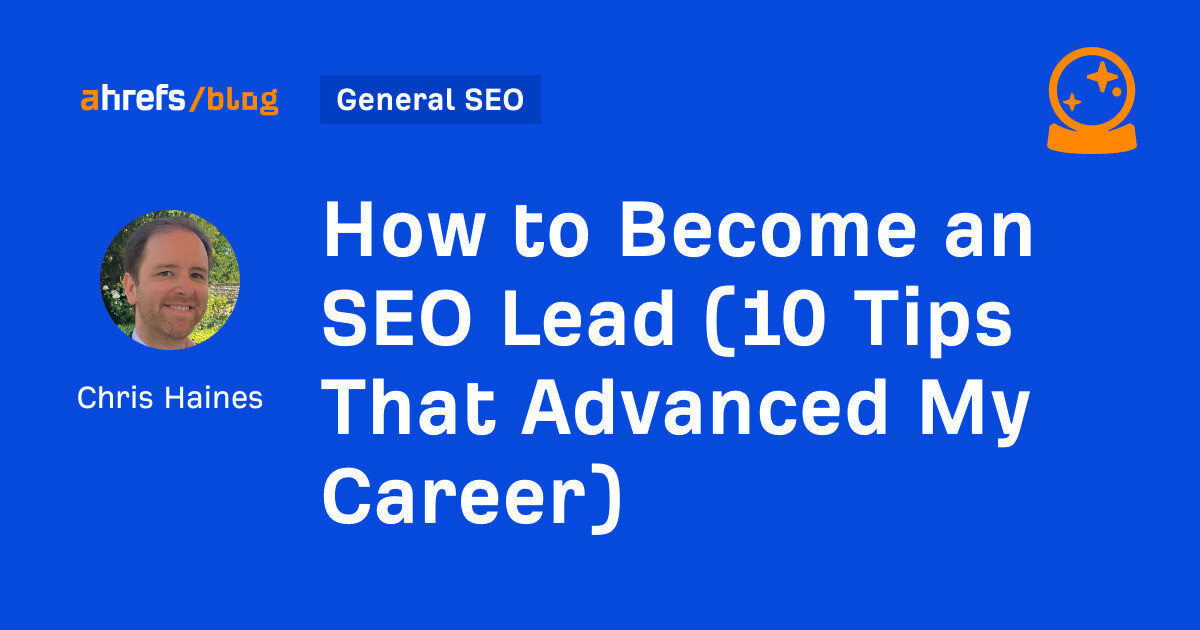
A few years ago, I was an SEO Lead managing enterprise clients’ SEO campaigns. It’s a senior role and takes a lot of work to get there. So how can you do it, too?
In this article, I’ll share ten tips to help you climb the next rung in the SEO career ladder.
Helping new hires in the SEO team is important if you want to become an SEO Lead. It gives you the experience to develop your leadership skills, and you can also share your knowledge and help others learn and grow.
It demonstrates you can explain things well, provide helpful feedback, and improve the team’s standard of work. It shows you care about the team’s success, which is essential for leaders. Bosses look for someone who can do their work well and help everyone improve.
Here are some practical examples of things I did early in my career to help mentor junior members of the team that you can try as well:
- Hold “lunch and learn” sessions on topics related to SEO and share case studies of work you have done
- Create process documents for the junior members of the team to show them how to complete specific tasks related to your work
- Compile lists of your favorite tools and resources for junior members of the team
- Create onboarding documents for interns joining the company
Wouldn’t it be great if you could look at every single SEO Lead’s resume? Well, you already can. You can infer ~70% of any SEO’s resume by spying on their LinkedIn and social media channels.
Type “SEO Lead” into LinkedIn and see what you get.
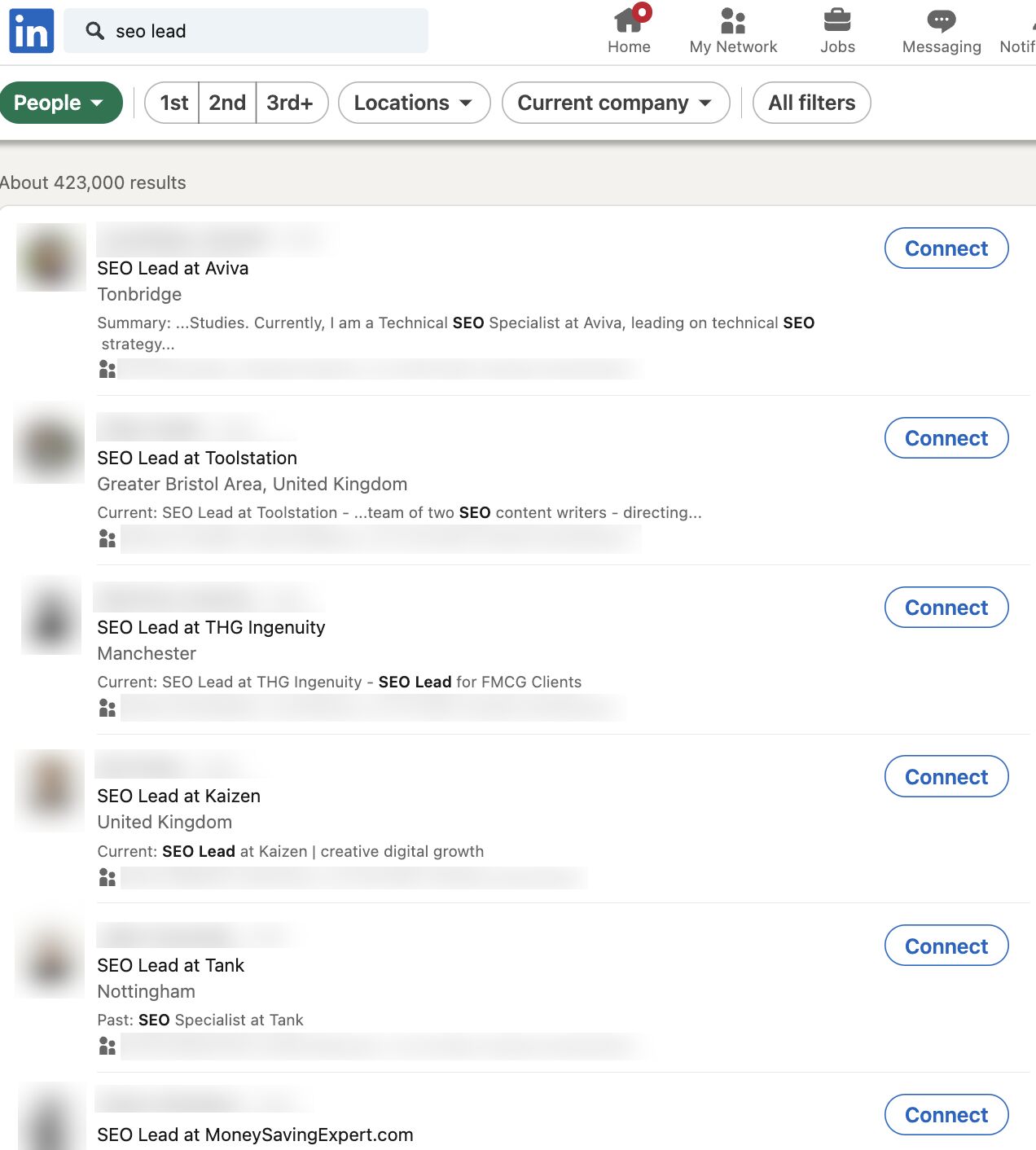
Tip
Look for common career patterns of the SEOs you admire in the industry.
I used this method to understand how my favorite SEOs and people at my company navigated their way from a junior role to a senior role.
For example, when the Head of SEO at the time Kirsty Hulse, joined my team, I added her on LinkedIn and realized that if I wanted to follow in her footsteps, I’d need to start by getting the role of SEO Manager to stand any possible chance of leading SEO campaigns like she was.
The progression in my company was from SEO Executive to Senior SEO Executive (Junior roles in London, UK), but as an outsider coming into the company, Kirsty showed me that it was possible to jump straight to SEO Manager given the right circumstances.
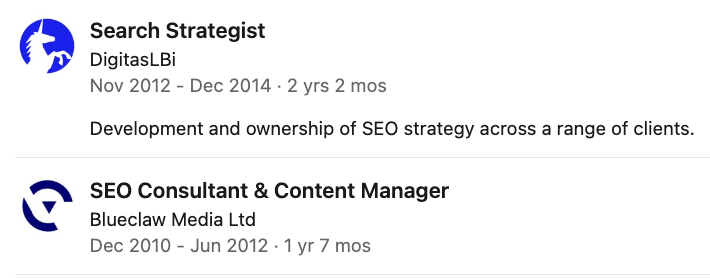

Using Kirsty’s and other SEOs’ profiles, I decided that the next step in my career needed to be SEO Manager, and at some point, I needed to get some experience with a bigger media agency so I could work my way up to leading an SEO campaign with bigger brands.
Sadly, you can’t just rock up to a monthly meeting and start leading a big brand SEO campaign. You’ll need to prove yourself to your line manager first. So how can you do this?
Here’s what I’d suggest you do:
- Create a strong track record with smaller companies.
- Obsessively share your wins with your company, so that senior management will already know you can deliver.
- At your performance review, tell your line manager that you want to work on bigger campaigns and take on more responsibility.
If there’s no hope of working with a big brand at your current job, you might need to consider looking for a new job where there is a recognizable brand. This was what I realized I needed to do if I wanted to get more experience.
Tip
Get recruiters on LinkedIn to give you the inside scoop on which brands or agencies are hiring. Ask them if you have any skill gaps on your resume that could prevent you from getting a job with these companies.
Being critical of your skill gaps can be hard to do. I found the best way to identify them early in my career was to ask other people—specifically recruiters. They had knowledge of the industry and were usually fairly honest as to what I needed to improve.
From this, I realized I lacked experience working with other teams—like PR, social, and development teams. As a junior SEO, your mind is focused 99% on doing SEO, but when you become more senior, your integration with other teams is important to your success.
For this reason, I’d suggest that aspiring SEO Leads should have a good working knowledge of how other teams outside of SEO operate. If you take the time to do this, it will pay dividends later in your career:
- If there are other teams in your company, ask if you can do some onboarding training with them.
- Get to know other team leads within your company and learn how they work.
- Take training courses to learn the fundamentals of other disciplines that complement SEO, such as Python, SQL, or content creation.
Sometimes, employers use skill gaps to pay you less, so it’s crucial to get the skills you need early on…


Examples of other skill gaps I’ve noticed include:
Tip
If you think you have a lot of skill gaps, then you can brush up your skills with our SEO academy. Once you’ve completed that, you can fast-track your knowledge by taking a course like Tom Critchlow’s SEO MBA, or you can try to develop these skills through your job.
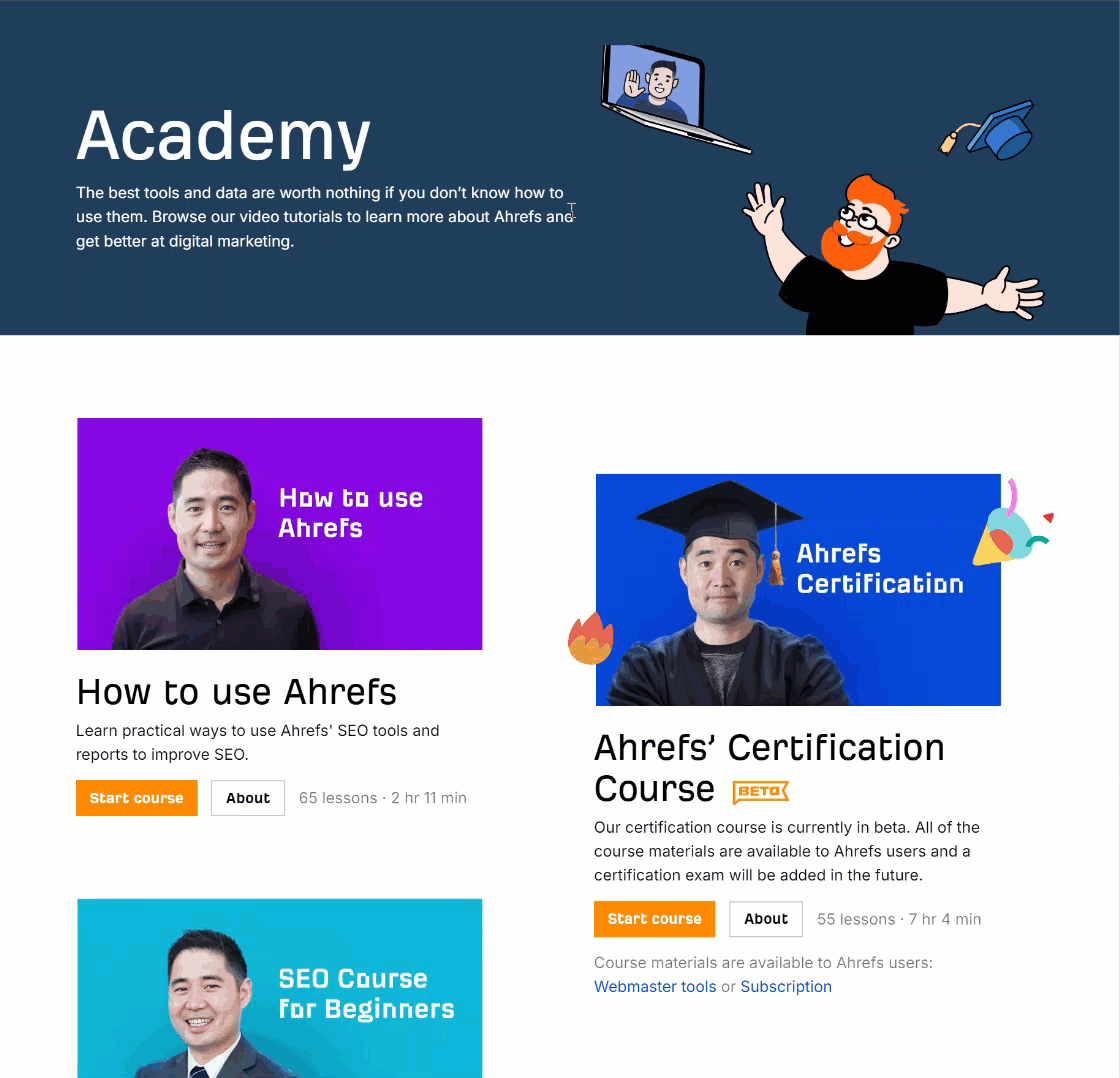

As a junior in any company, it can be hard to get your voice heard amongst the senior crowd. Ten years ago, I shared my wins with the team in a weekly group email in the office.
Here’s what you should be sharing:
- Praise from 3rd parties, e.g. “the client said they are impressed with the work this month.”
- Successful performance insights, e.g “following our SEO change, the client has seen X% more conversions this month.”
- Examples of the work you led, e.g. if your leadership and decision-making led to good results, then you need to share it.
At Ahrefs I keep a “wins” document. It’s just a simple spreadsheet that lists feedback on the blog posts I’ve written, the links I’ve earned and what newsletters my post was included in. It’s useful to have a document like this so you have a record of your achievements.
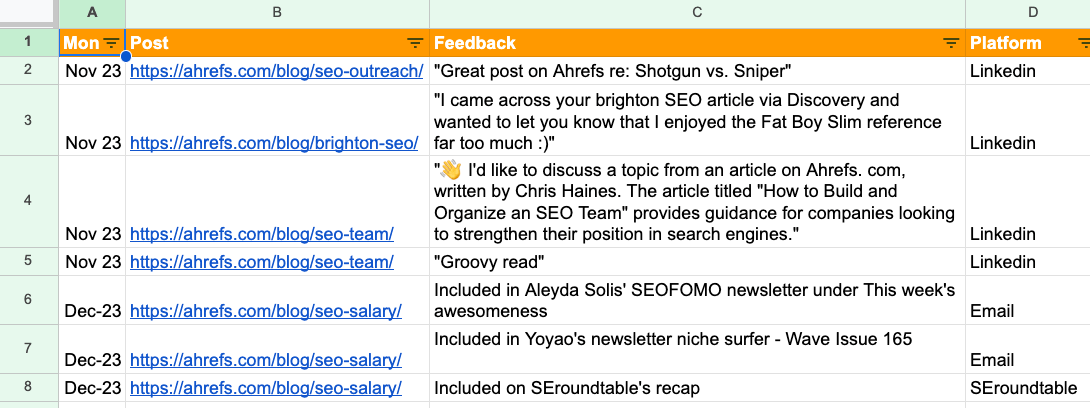

Sidenote.
Junior SEOs sometimes talk about the things “we” achieved as a team rather than what they achieved at the interview stage. If you want the SEO Lead role, remember to talk about what you achieved. While there’s no “I” in team, you also need to advocate for yourself.
One of my first big wins as an SEO was getting a link from an outreach campaign on Buzzfeed. When I went to Brighton SEO later that year and saw Matthew Howells-Barby sharing how he got a Buzzfeed link, I realized that this was not something everyone had done.
So when I did manage to become an SEO Lead, and my team won a prize in Publicis Groupe for our SEO performance, I made sure everyone knew about the work we did. I even wrote a case study on the work for Publicis Groupe’s intranet.
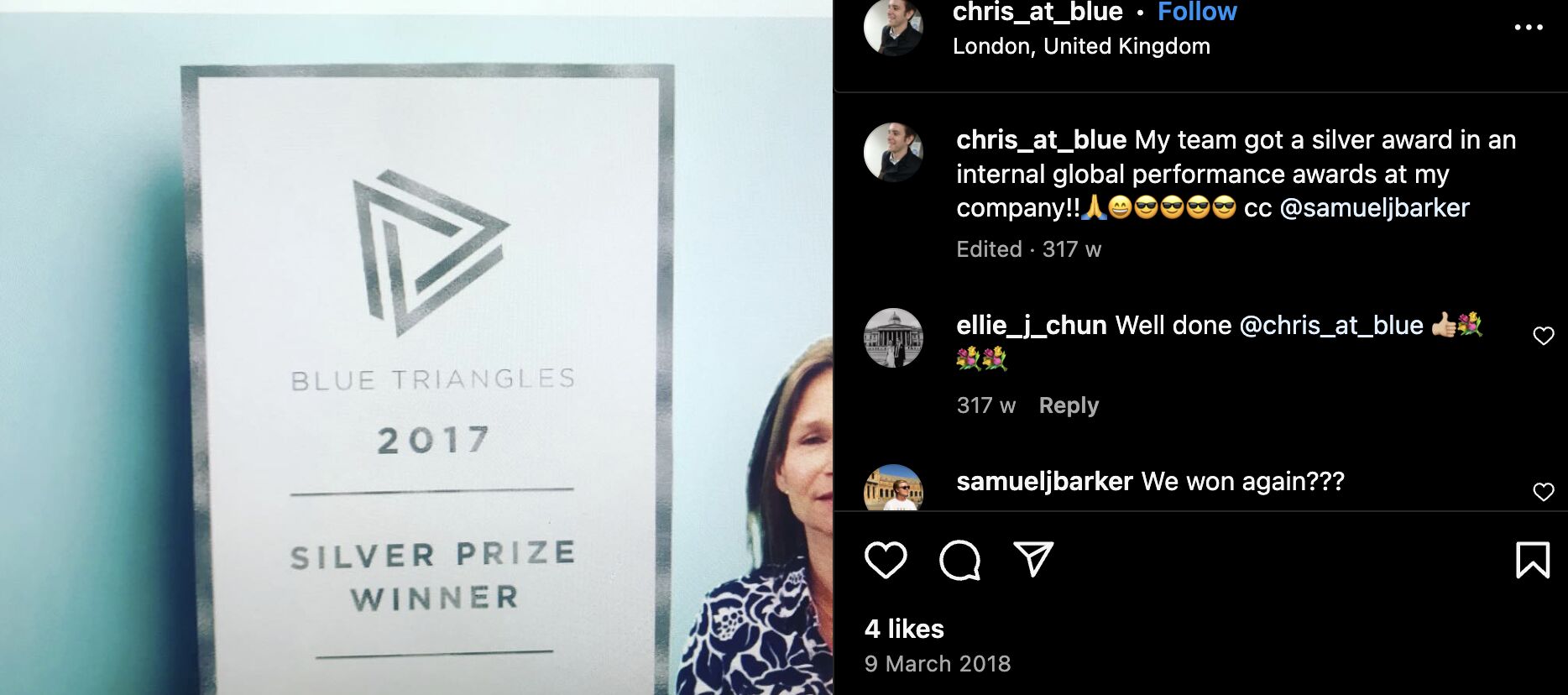

I’ve worked with some incredibly talented people, many of whom have helped me in my career.
I owe my big break to Tim Cripps, Laura Scott, and Kevin Mclaren. Without their support and encouragement, I wouldn’t be where I am today. Even before that, David Schulhof, Jodie Wheeler, and Carl Brooks let me mastermind some bonkers content campaigns that were lucky enough to succeed:


I wasn’t even an SEO Lead at that point, but they gave me the reins and trusted me.
So, how can you find your tribe?
- Speak to recruiters – they might hold the ticket to your next dream job. I spoke to many recruiters early in my career, but only two recruiters delivered for me—they were Natasha Woodford, and Amalia Gouta. Natasha helped me get a job that filled my skill gap, and Amalia helped me get my first SEO Lead role.
- Go to events and SEO conferences, and talk to speakers to build connections outside of your company.
- Use LinkedIn and other social media to interact with other companies or individuals that resonate with you.
Many senior SEO professionals spend most of their online lives on X and LinkedIn. If you’re not using them, you’re missing out on juicy opportunities.
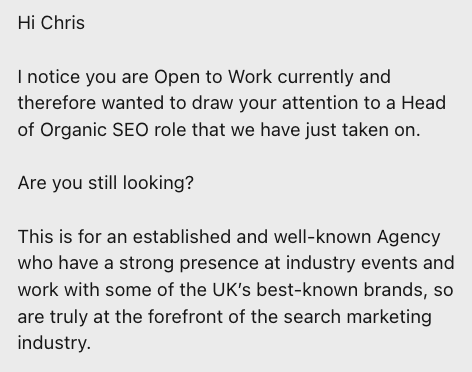

Sharing your expertise on these platforms is one of the easiest ways to increase your chances of getting a senior SEO role. Because, believe it or not, sometimes a job offer can be just a DM away.
Here’s some specific ideas of what you can share:
- Share your thoughts on a trending topic – like the latest Google algorithm update.
- Share what you learned during the course of a campaign.
- Ask the community for their thoughts on a certain topic.
I’ve recently started posting on LinkedIn and am impressed by the reach you can get by posting infrequently on these topics.
Here’s an example of one of my posts where I asked the community for help researching an article I was writing:
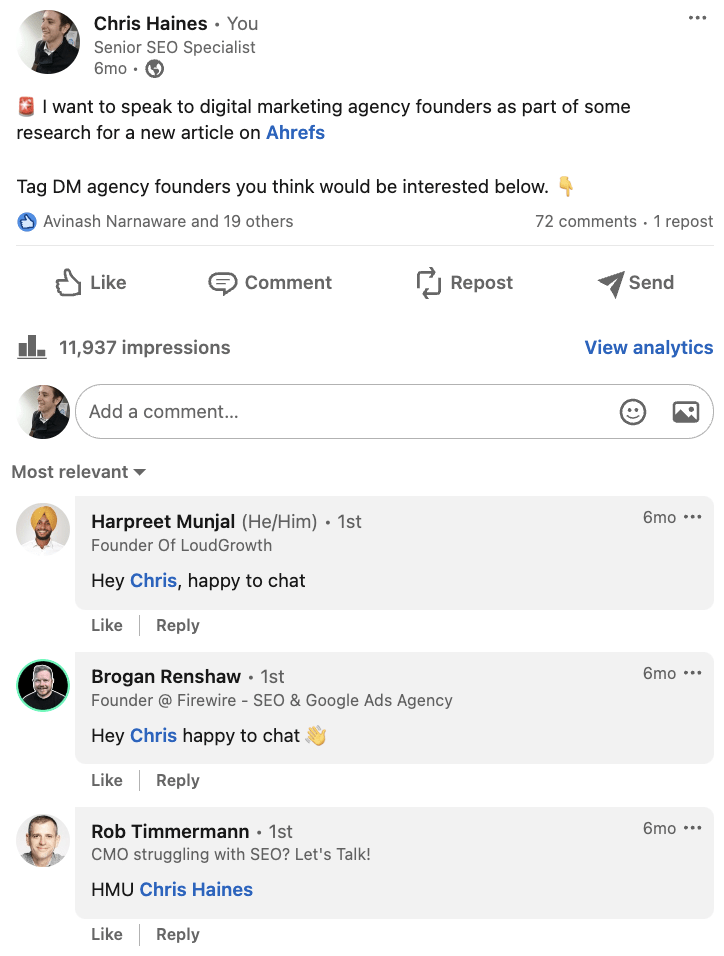

And here is the content performance across the last year from posting these updates.
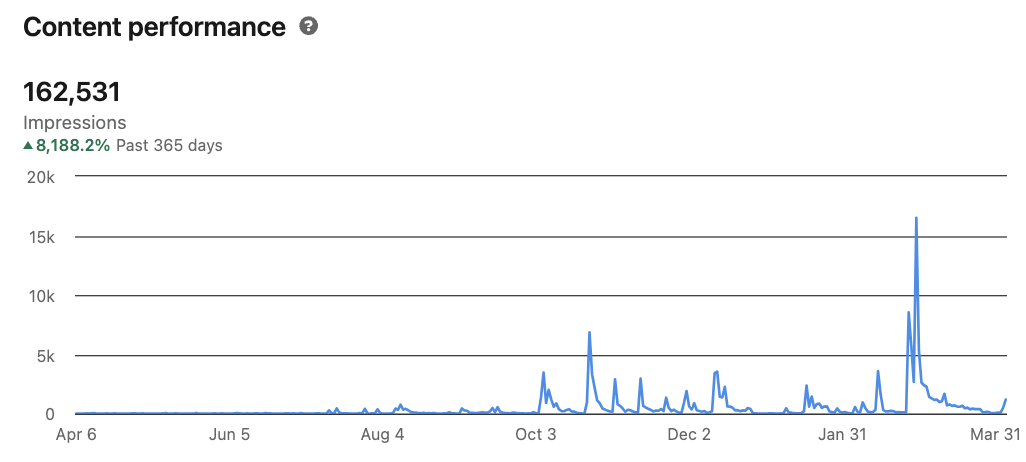

I’m clearly not a LinkedIn expert—far from it! But as you can see, with just a few months of posting, you can start to make these platforms work for you.
Godard Abel, co-founder of G2, talked on a podcast about conscious leadership. This struck a chord with me recently as I realized that I had practiced some of the principles of conscious leadership—unconsciously.
You can start practicing conscious leadership by asking yourself if your actions are above or below the line. Here are a few examples of above and below-the-line thinking:
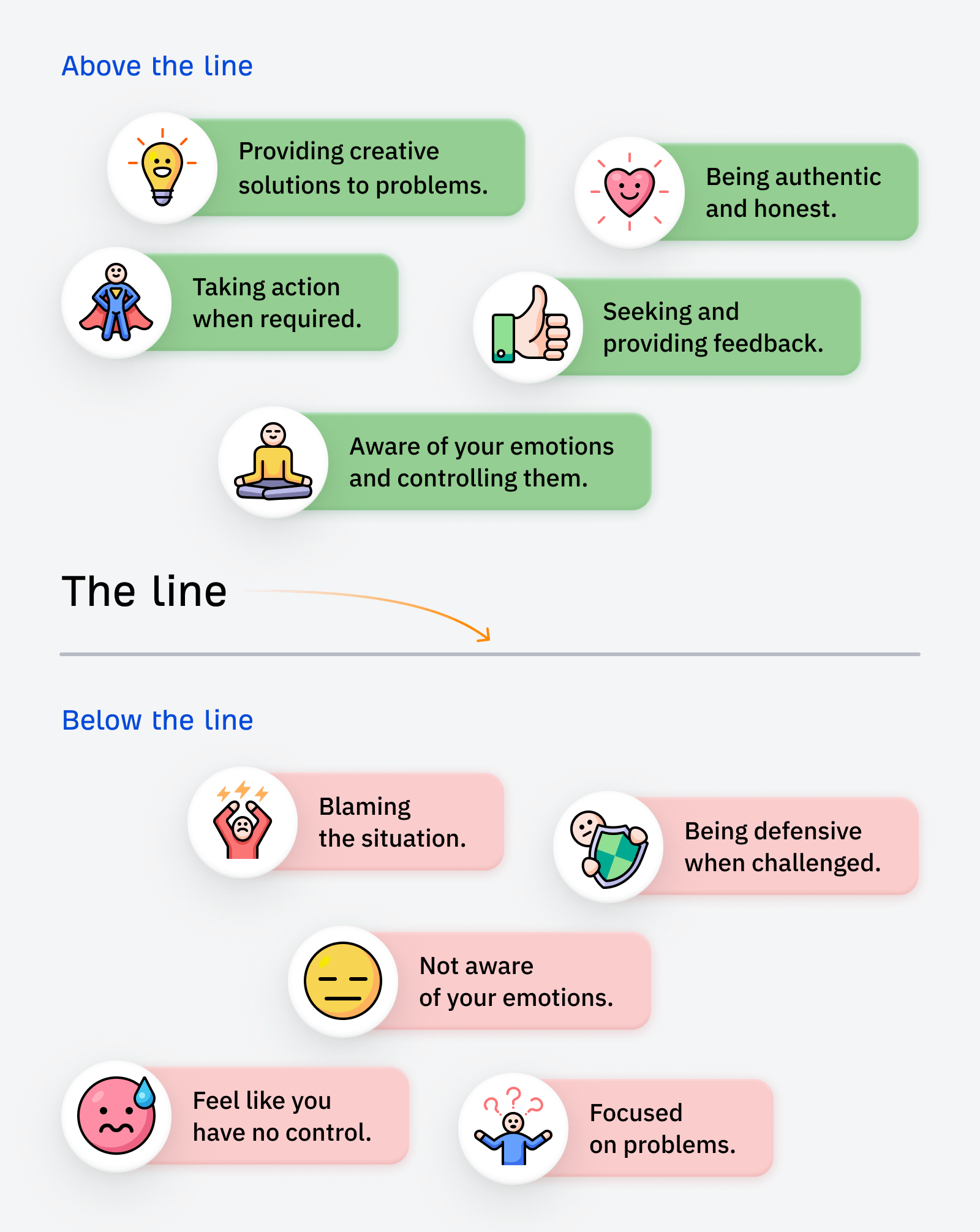

If you want a senior SEO role, I’d suggest shifting your mindset to above-the-line thinking.
In the world of SEO, it’s easy to blame all your search engine woes on Google. We’ve all been there. But a lot of the time, simple changes to your website can make a huge difference—it just takes a bit of effort to find them and make the changes.
SEO is not an exact science. Some stakeholders naturally get nervous if they sense you aren’t sure about what you’re saying. If you don’t get their support early on then you fall at the first hurdle.


To become more persuasive, try incorporating Aristotle’s three persuasive techniques into your conversations.
- Pathos: use logical reasoning, facts, and data to present water-tight arguments.
- Ethos: establish your credibility and ethics through results.
- Logos: make your reports tell a story.
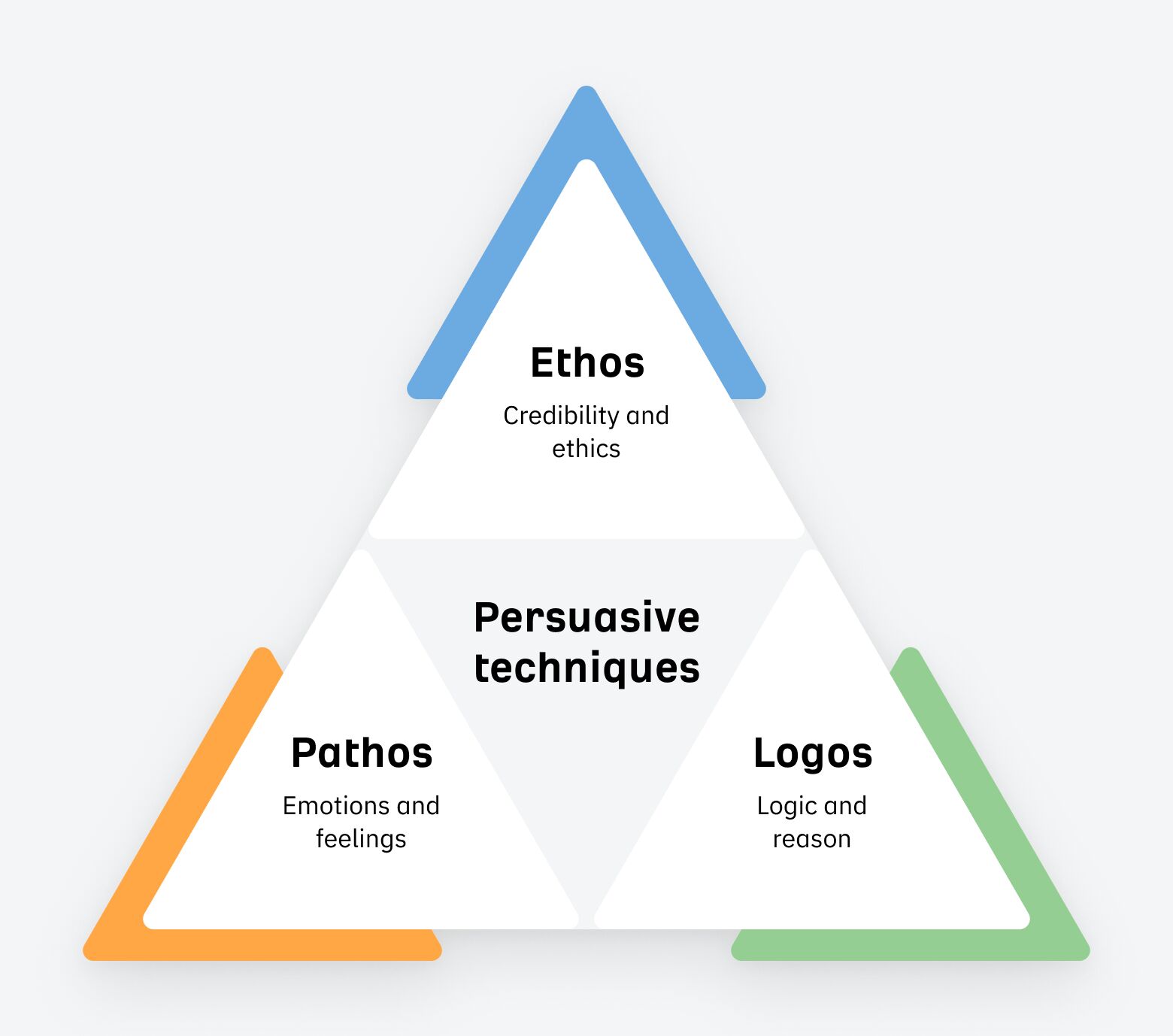

Then sprinkle in language that has a high level of modality:
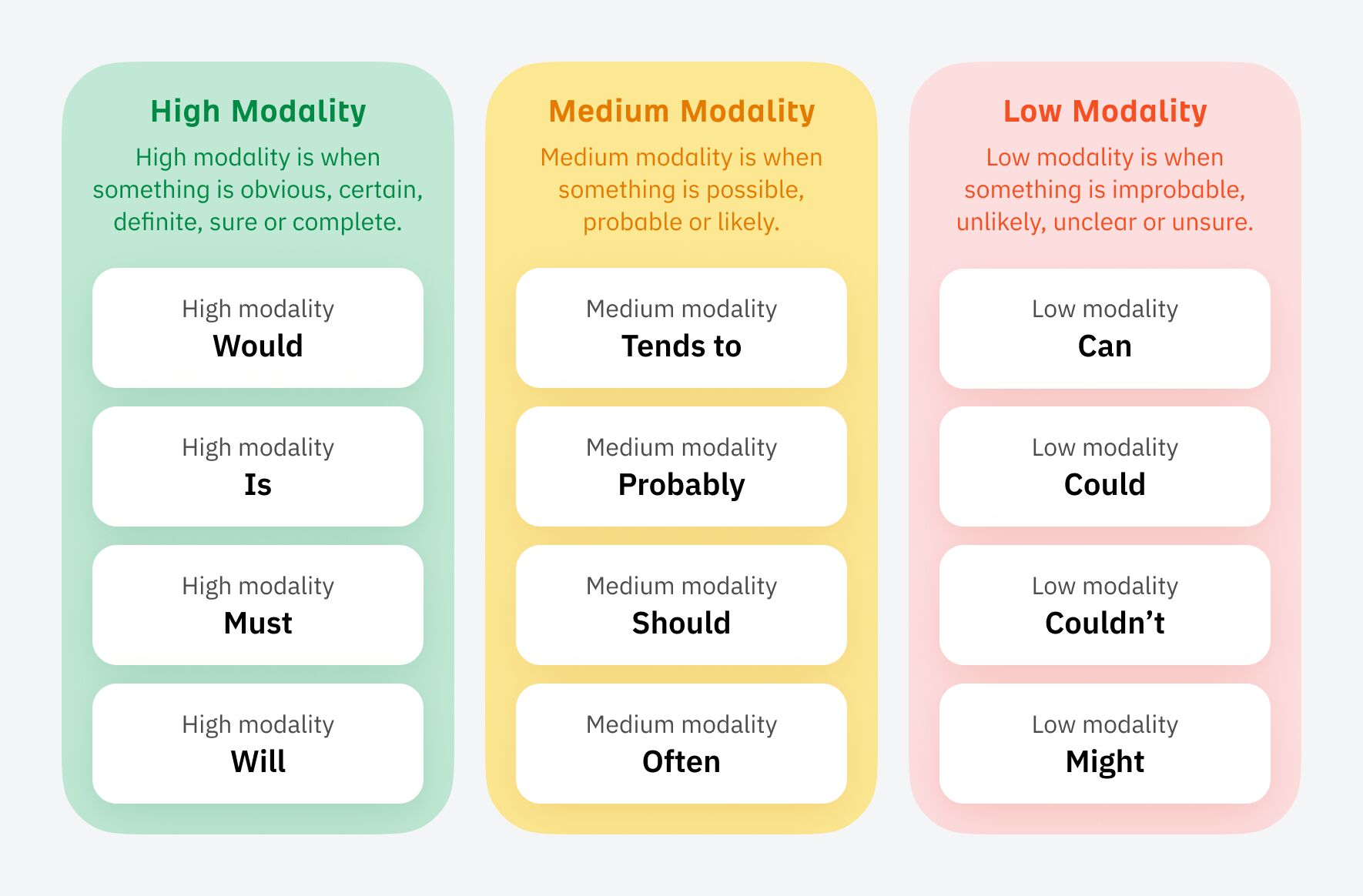

Some people will be able to do this naturally without even realizing it, but for others, it can be an uphill struggle. It wasn’t easy for me, and I had to learn to adapt the way I talked to stakeholders early on.
The strongest way I found was to appeal to emotions and back up with data from a platform like Ahrefs. Highlight what competitors have done in terms of SEO and the results they’ve earned from doing it.
Sidenote.
You don’t have to follow this tip to the letter, but being aware of these concepts means you’ll start to present more confident and persuasive arguments for justifying your SEO strategies.
When I started in SEO, I had zero connections. Getting a job felt like an impossible challenge.
Once I’d got my first SEO Lead job, it felt stupidly easy to get another one—just through connections I’d made along the way in my SEO journey.
I once got stuck on a delayed train with a senior member of staff, and he told me he was really into Google Local Guides, and he was on a certain high level. He said it took him a few years to get there.
Local Guides is part of Google Maps that allows you submit reviews and other user generated content
When he showed me the app, I realized that you could easily game the levels by uploading lots of photos.
In a “hold my beer” moment, I mass downloaded a bunch of photos, uploaded them to Local Guides and equaled his Local Guide level on the train in about half an hour. He was seething.
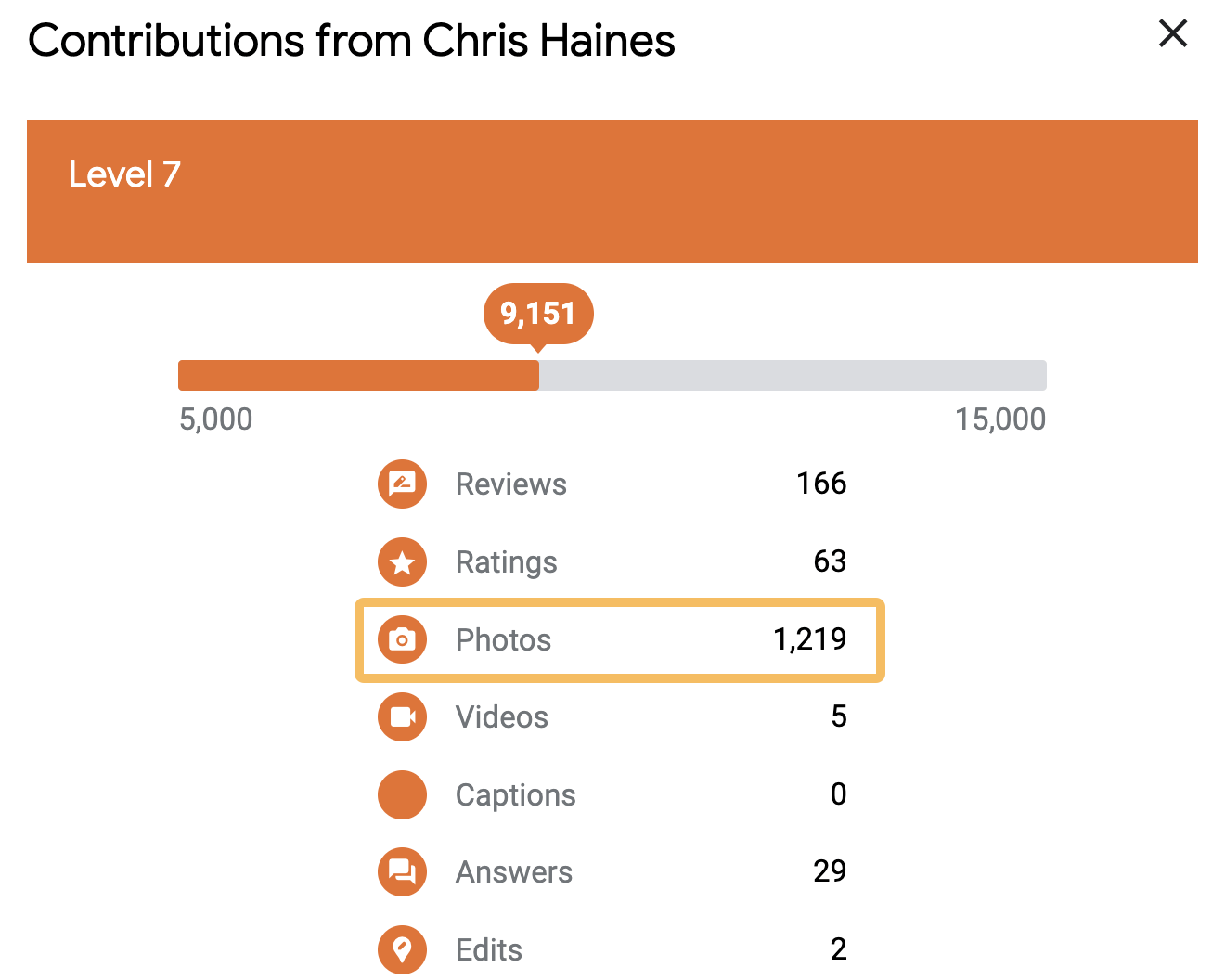

One of the photos I uploaded was a half-eaten Subway. It still amazes me that 50,974 people have seen this photo:
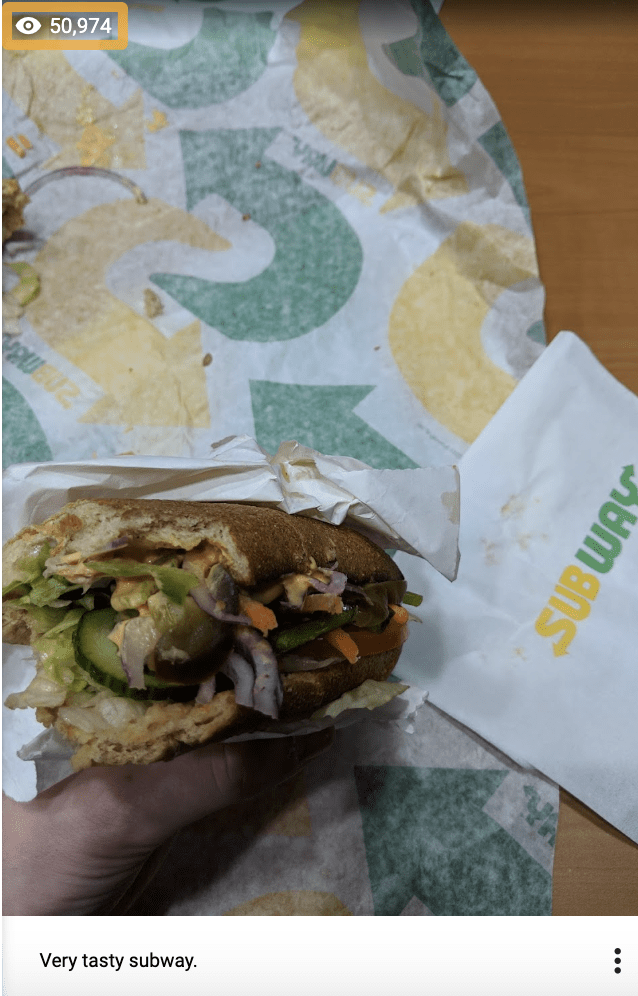

This wasn’t exactly SEO, but the ability to find this ‘hack’ so quickly impressed him, and we struck up a friendship.
The next month that person moved to another company, and then another few months later, he offered me an SEO Lead job.
Tip
Build connections with everyone you can—you never know who you might need to call on next.
Final thoughts
The road to becoming an SEO Lead seems straightforward enough when you start out, but it can quickly become long and winding.
But now armed with my tips, and a bucket load of determination, you should be able to navigate your way to an SEO Lead role much quicker than you think.
Lastly, if you want any more guidance, you can always ping me on LinkedIn. 🙂
SEO
7 Content Marketing Conferences to Attend in 2024
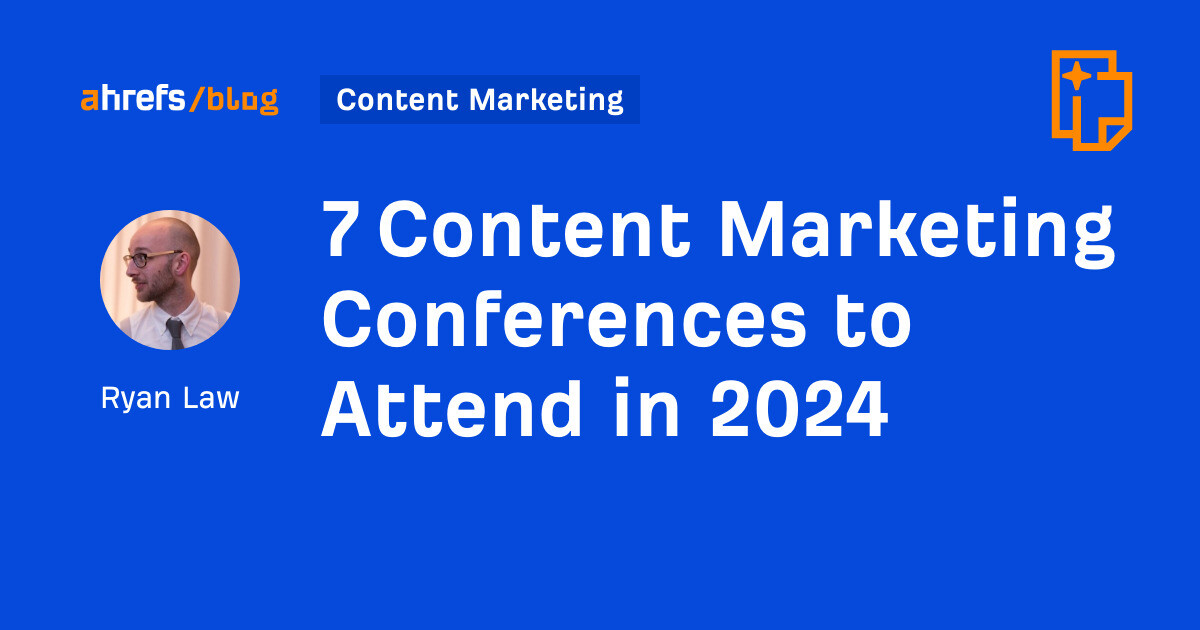
I spend most of my days sitting in front of a screen, buried in a Google Doc. (You probably do too.)
And while I enjoy deep work, a few times a year I get the urge to leave my desk and go socialize with other human beings—ideally on my employer’s dime 😉
Conferences are a great excuse to hang out with other content marketers, talk shop, learn some new tricks, and pretend that we’re all really excited about generative AI.
Without further ado, here are the biggest and best content marketing conferences happening throughout the rest of 2024.
Dates: May 5–7
Prices: from $795
Website: https://cex.events/
Location: Cleveland, OH
Speakers: B.J. Novak, Ann Handley, Alexis Grant, Justin Welsh, Mike King
CEX is designed with content entrepreneurs in mind (“contenpreneurs”? Did I just coin an awesome new word?)—people that care as much about the business of content as they do the craft.
In addition to veteran content marketers like Ann Handley and Joe Pulizi waxing lyrical about modern content strategy, you’ll find people like Justin Welsh and Alexis Grant exploring the practicalities of quitting your job and becoming a full-time content creator.
Here’s a trailer for last year’s event:
Sessions include titles like:
- Unlocking the Power of Book Publishing: From Content to Revenue
- Quitting A $200k Corporate Job to Become A Solo Content Entrepreneur
- Why You Should Prioritize Long-Form Content
(And yes—Ryan from The Office is giving the keynote.)
Dates: Jun 3–4
Location: Seattle, WA
Speakers: Wil Reyolds, Bernard Huang, Britney Muller, Lily Ray
Prices: from $1,699
Website: https://moz.com/mozcon
Software company Moz is best known in the SEO industry, but its conference is popular with marketers of all stripes. Amidst a lineup of 25 speakers there are plenty of content marketers speaking, like Andy Crestodina, Ross Simmonds, and Chima Mmeje.
Check out this teaser from last year’s event:
This year’s talks include topics like:
- Trust and Quality in the New Era of Content Discovery
- The Power of Emotion: How To Create Content That (Actually) Converts
- “E” for Engaging: Why The Future of SEO Content Needs To Be Engaging
Dates: Sep 18–20
Location: Boston, MA
Speakers: TBC
Prices: from $1,199
Website: https://www.inbound.com/
Hosted by content marketing OG HubSpot, INBOUND offers hundreds of talks, deep dives, fireside chats, and meetups on topics ranging from brand strategy to AI.
Here’s the recap video:
I’ve attended my fair share of INBOUNDs over the years (and even had a beer with co-founder Dharmesh Shah), and always enjoy the sheer choice of events on offer.
Keynotes are a highlight, and this year’s headline speaker has a tough act to follow: Barack Obama closed out the conference last year.
Dates: Oct 22–23
Location: San Diego, CA
Speakers: TBC
Prices: from $1,199
Website: https://www.contentmarketingworld.com/
Arguably the content marketing conference, Content Marketing World has been pumping out content talks and inspiration for fourteen years solid.
Here’s last year’s recap:
The 2024 agenda is in the works, but last year’s conference explored every conceivable aspect of content marketing, from B2C brand building through to the quirks of content for government organizations, with session titles like:
- Government Masterclass: A Content Marketing Strategy to Build Public Trust
- A Beloved Brand: Evolving Zillow’s Creative Content Strategy
- Evidence-Based SEO Strategies: Busting “SEO Best Practices” and Other Marketing Myths
Dates: Oct 24–25
Location: Singapore
Speakers: Andy Chadwick, Nik Ranger, Charlotte Ang, Marcus Ho, Victor Karpenko, Amanda King, James Norquay, Sam Oh, Patrick Stox, Tim Soulo (and me!)
Prices: TBC
Website: https://ahrefs.com/events/evolve2024-singapore
That’s right—Ahrefs is hosting a conference! Join 500 digital marketers for a 2-day gathering in Singapore.
We have 20 top speakers from around the world, expert-led workshops on everything from technical SEO to content strategy, and tons of opportunities to rub shoulders with content pros, big brands, and the entire Ahrefs crew.
I visited Singapore for the first time last year and it is really worth the trip—I recommend visiting the Supertree Grove, eating at the hawker markets in Chinatown, and hitting the beach at Sentosa.
If you need persuading, here’s SEO pro JH Scherck on the Ahrefs podcast making the case for conference travel:
And to top things off, here’s a quick walkthrough of the conference venue:
Dates: Oct 27–30
Location: Portland, OR
Speakers: Relly Annett-Baker, Fawn Damitio, Scott Abel, Jennifer Lee
Prices: from $1,850
Website: https://lavacon.org/
LavaCon is a content conference with a very technical focus, with over 70 sessions dedicated to helping companies solve “content-related business problems, increase revenue, and decrease production costs”.
In practice, that means speakers from NIKE, Google, Meta, Cisco, and Verizon, and topics like:
- Operationalizing Generative AI,
- Taxonomies in the Age of AI: Are they still Relevant?, and
- Out of Many, One: Building a Semantic Layer to Tear Down Silos
Here’s the recap video for last year’s conference:
Dates: Nov 8
Location: London
Speakers: Nick Parker, Tasmin Lofthouse, Dan Nelken, Taja Myer
Prices: from £454.80
Website: https://www.copywritingconference.com/
CopyCon is a single-day conference in London, hosted by ProCopywriters (a membership community for copywriters—I was a member once, many years ago).
Intended for copywriters, creatives, and content strategists, the agenda focuses heavily on the qualitative aspects of content that often go overlooked—creative processes, tone of voice, and creating emotional connections through copy.
It’s a few years old, but this teaser video shares a sense of the topics on offer:
This year’s talks include sessions like:
- The Mind-Blowing Magic of Tone of Voice,
- The Power of AI Tools as a Content Designer, and the beautifully titled
- Your Inner Critic is a Ding-Dong.
(Because yes, your inner critic really is a ding-dong.)
Final thoughts
These are all content-specific conferences, but there are a ton of content-adjacent events happening throughout the year. Honourable mentions go to DigiMarCon UK 2024 (Aug 29–30, London, UK), Web Summit (Nov 11–14, Lisbon, Portugal), and B2B Forum (Nov 12–14, Boston, MA).
I’ve focused this list solely on in-person events, but there are also online-only conferences available, like ContentTECH Summit (May 15–16).
Heading to a content conference that I haven’t covered? Share your recommendation with me on LinkedIn or X.
-

 PPC4 days ago
PPC4 days ago19 Best SEO Tools in 2024 (For Every Use Case)
-

 PPC7 days ago
PPC7 days ago4 New Google Ads Performance Max Updates: What You Need to Know
-

 MARKETING7 days ago
MARKETING7 days agoWill Google Buy HubSpot? | Content Marketing Institute
-
SEARCHENGINES6 days ago
Daily Search Forum Recap: April 16, 2024
-

 SEO6 days ago
SEO6 days agoGoogle Clarifies Vacation Rental Structured Data
-

 MARKETING6 days ago
MARKETING6 days agoStreamlining Processes for Increased Efficiency and Results
-
SEARCHENGINES5 days ago
Daily Search Forum Recap: April 17, 2024
-

 PPC7 days ago
PPC7 days agoHow to Collect & Use Customer Data the Right (& Ethical) Way
















You must be logged in to post a comment Login